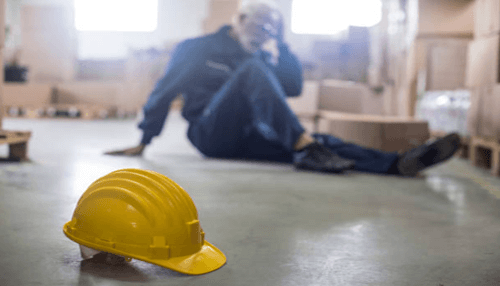Slip-and-fall accidents are unpredictable, expensive, and can be a life-changer for a victim that’s seriously injured. The conditions which cause these accidents can vary from a slippery floor, a pothole in the road, ice on the sidewalk, or faulty stair steps.
In its most basic meaning, slip-and-fall is referring to a claim of personal injury for when an individual falls, slips or trips, and is physically injured while on another person’s or company’s property.
Related Post: 9 Tips to Avoid Electrical Accidents at Home During Monsoon
This form of negligence is known as premises liability and the owner is often held responsible legally.
Slip-and-Fall FAQs
Mishaps happen anywhere from the shopping mall to your front steps or even at your job. In fact, your place of employment is a prime spot for slip-and-fall accidents. A US Bureau of Labor Statistics report from 2019 shows that 791 workplace deaths occurred nationwide due to slip-and-fall accidents. That is a slight decrease from a high of 887 in the year 2017, but it’s still a staggering number keeping in mind that these are deaths, not simply injuries. If we consider injuries the number is much higher.
Also Read: How to grow your Twitter with real followers
It is therefore in everyone’s best interest to try to prevent their occurrence. Slip-and-fall accidents, whether they happen inside or outside, normally occur when a property is not kept up or maintained. This lack of maintenance can lead to cracks or holes in supportive surfaces like floors or outdoor patios or snow accumulation on the ground leading up to a place of business. Even missing handrails can result in a slip-and-fall accident so it is important to make sure that if you are the owner of a business or property, that your building is up to code.
Ripe for Fraud
CBS reported on an infamous case where a New Jersey man was convicted of fraud for faking a slip-and-fall accident at his job. These days, people are likely to sue for slip-and-fall accidents which makes preventing them in the first place even more important.
These types of cases go to court more often than personal injury claims, which are often settled out of court, and sometimes slip-and-fall accidents result in a kind of dog-and-pony show in court that most want to avoid.
That is why so many business owners go out of their way to avoid them. If the slip-and-fall injuries could have been prevented and were not, the plaintiff will then be tasked with proving negligence. It is difficult to prove negligence when every precaution is taken.
Also Read: Options After Getting Injured in an Accident
When More Than One Party Is Held Liable
Occasionally more than one defendant is brought to court for a slip-and-fall injury legal claim. For example, if a person was injured in an elevator while at work, he or she may have a case against the elevator manufacturer in the form of a product liability claim, against the owner of the property in a premises liability claim, and also a claim against the employer for workers compensation benefits. Performing elevator maintenance regularly therefore is a small price to pay to prevent these lawsuits.
The same is true for security companies. If a security officer was instructed to put up a sign to notify the public of a danger such as the possibility of falling scaffolding but fails to do so, both the premises owner and security company may be at fault.
Premises liability is a complex legal issue and particular facts will determine the outcome. An ounce of prevention is worth a pound of cure, especially in slip-and-fall accidents which can be extremely expensive for property owners and a public relations nightmare that nobody needs or wants.



